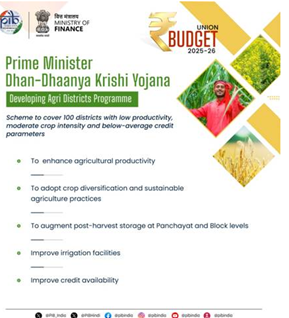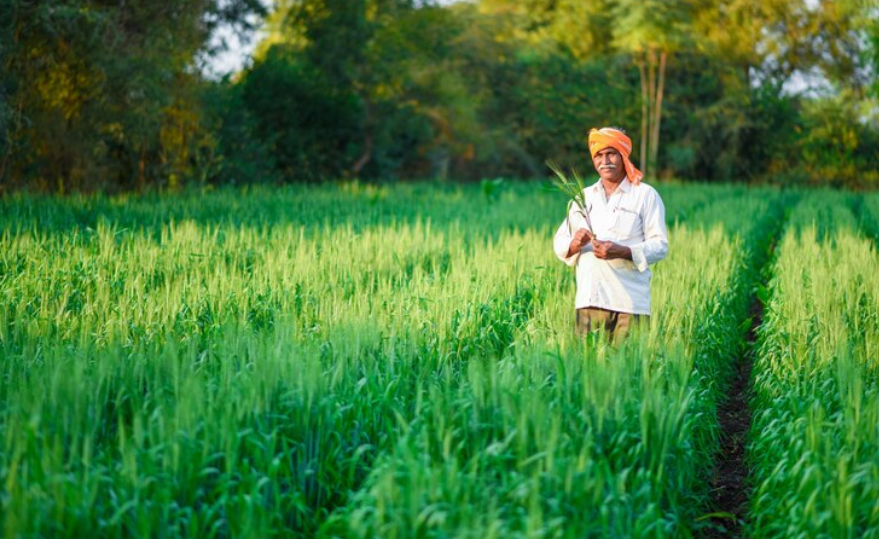Syllabus:
GS3: Major crops cropping patterns in various parts of the country, different types of irrigation and irrigation systems storage, transport and marketing of agricultural produce and issues and related constraints; e-technology in the aid of farmers
Context:
The Union Cabinet approved the “Prime Minister Dhan-Dhaanya Krishi Yojana” for a period of six years, beginning with 2025-26 to cover 100 districts.
More on the News
- Prime Minister Dhan-Dhaanya Krishi Yojana draws inspiration from NITI Aayog’s Aspirational District Programme and first of its kind, focusing exclusively on agriculture and allied sectors.
- The Scheme will be implemented through the convergence of 36 existing schemes across 11 Departments, other State schemes and local partnerships with the private sector.
Prime Minister Dhan-Dhaanya Krishi Yojana (PM-DDKY)
- The Scheme aims to enhance agricultural productivity, increase adoption of crop diversification and sustainable agricultural practices, augment post-harvest storage at the panchayat and block levels, improve irrigation facilities and facilitate availability of long-term and short-term credit.
- 100 districts will be identified based on three key indicators of low productivity, low cropping intensity, and less credit disbursement.
- The number of districts in each state/UT will be based on the share of Net Cropped Area and operational holdings. However, a minimum of 1 district will be selected from each state.
Planning and Implementation

- A master plan for the implementation of PMDDKY, which will include agriculture and allied activities, will be drawn up for every district.
- This District Agriculture and Allied Activities Plan will be finalized by the District Dhan Dhaanya Samiti, headed by District Collector which will also have progressive farmers as members.
- The District Plans will be aligned to the national goals of crop diversification, conservation of water and soil health, self-sufficiency in agriculture and allied sectors as well as expansion of natural and organic farming.
- The plans will be based on extensive consultations and understanding cropping patterns and allied activities as per agro-climatic conditions.
- Committees will be set up at the district, state, and national levels for their effective implementation.
- Central Nodal Officers (CNOs) will be appointed for field visits, review and monitoring.
- Every district will have central and state agriculture universities as technical knowledge partners.
- NITI will provide “overall guidance and capacity building” support to PMDDKY as it is designed on the lines of the Aspirational Districts Programme (ADP).
- Progress of the Scheme in each Dhan-Dhaanya district will be monitored on 117 key Performance Indicators through a dashboard on a monthly basis.
Objectives:
- According to the government, the program has five objectives:
- Enhancing agricultural productivity
- Adopting crop diversification and sustainable agriculture practices
- Augmenting post-harvest storage at the panchayat and block level
- Improving irrigation facilities
- Facilitating availability of long-term and short-term credit.
Selection of PMDDKY districts
- The 100 districts will be selected on the basis of three parameters – low productivity, moderate crop intensity, and below-average credit parameters.
- Cropping intensity is a measure of how efficiently land is used. It is defined as the percentage of gross cropped area to the net area sown.
- The number of districts in each state/ Union Territory will be based on the share of net cropped area and operational holdings. However, a minimum of one district will be selected from each state.

